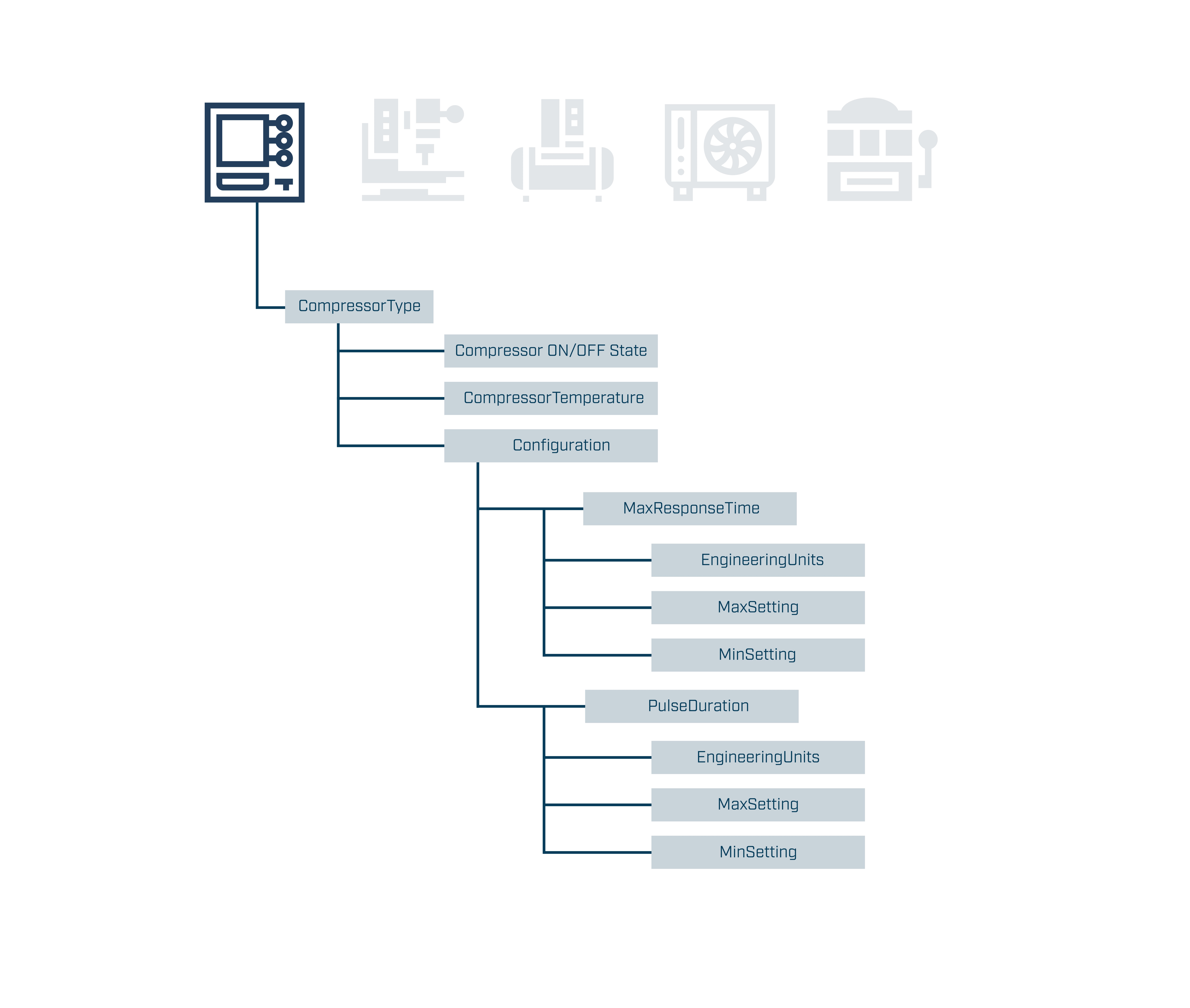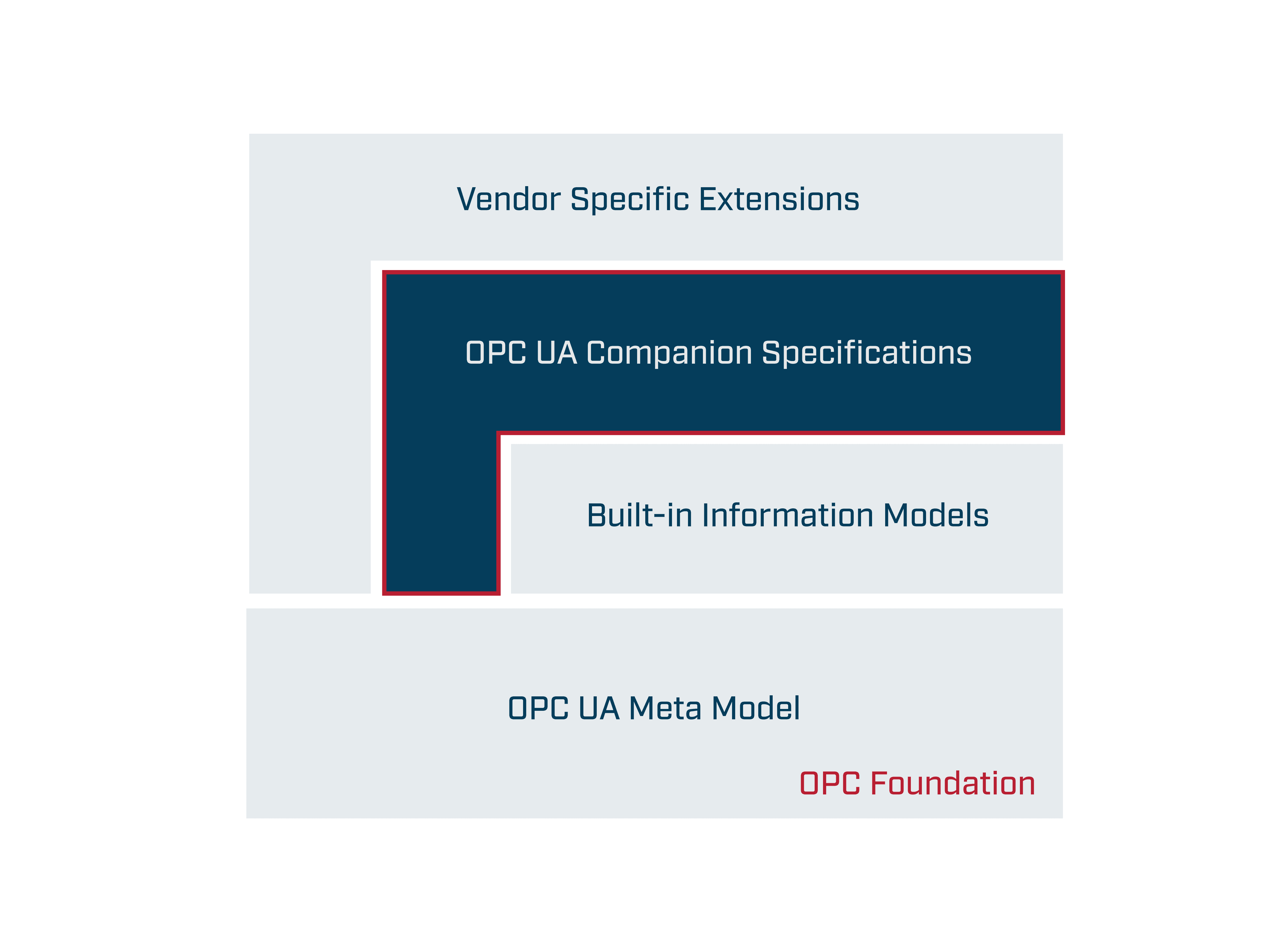
The benefits of OPC UA’s information model can broadly be divided into three categories.
OPC UA information models provide contextualized information by defining not only the data's structure and format but also the data's meaning and context. To explain the data's meaning and context, the information model uses object-oriented modeling, where data is organized into objects with specific types and properties. For example, an OPC UA information model for a machine tool might have a "Machine" object that represents the entire machine, with sub-objects for the various components such as the "Compressor," "Controller," and "Sensor," each with their own properties

Figure 1. OPC UA’s hierarchical structure, showing a machine, the machine’s compressor,
and the compressor's properties.
To further enhance contextualization, OPC UA information models can include descriptions and documentation for each object or property.
The hierarchical structure of OPC UA's information model, similar to a tree-like structure, enables users to navigate and understand the context of the information easily. Users can start at any node and navigate higher up to relevant machines or lower to specific configuration settings.
Let's say a company manufactures automotive parts and they have several production lines that use different machines to perform various operations, such as stamping, welding, and painting. To monitor the production line’s performance, they gather a wide range of data from the machines, such as temperature, pressure, speed, and vibration.
Using OPC UA's contextualized data, the company can aggregate and analyze this data in real time to identify patterns and trends and to make informed decisions about machine maintenance, process optimization, quality control, and energy management. For example, companies can use the data to improve the following:
In summary, companies can use OPC UA's contextualized data to gain deeper insights into their manufacturing operations, enabling them to make data-driven decisions that improve efficiency, reduce costs, and enhance product quality.
One of the main ways that OPC UA's information models are future-proof is via its support for companion specifications and vendor-specific extensions.
Companion specifications are domain-specific information models built on top of the OPC UA standard, defining additional data types, objects, and services specific to a particular industry or application. The OPC Foundation is working with organizations such as VDMA to create OPC UA companion specifications. Together, they work to identify the specific data models and information needed for their respective industries or applications. They then define how this information can be represented using the OPC UA standard and create a companion specification that provides guidelines for using OPC UA in those contexts.
Individual vendors use vendor-specific extensions to create custom information models representing their products' specific features and capabilities. Ensuring their products can be easily integrated with other systems and applications supporting OPC UA.
Both companion specifications and vendor-specific extensions are compatible with the OPC UA standard as they're built using the same set of data types and objects defined in the standard

Figure 2. OPC UA Modelling
Additionally, OPC UA provides a flexible and extensible information model that can be easily adapted to new use cases and technologies.
OPC UA's support for companion specifications and vendor-specific extensions, as well as its flexible and extensible information model, help to ensure that it remains a future-proof technology that can adapt to changing industry needs and technological advancements.
Joakim Wiberg, Head of Technology, Anybus. Joakim is also the Chief Technology Officer (CTO) of ODVA and a frequent lecturer on security and industrial communication.

If you're looking to gain a deeper understanding of OPC UA's information model, we've got you covered. Our OPC UA information page is packed with detailed information, including how you can create custom information models using Anybus CompactCom IIoT Secure.
Embed the Anybus CompactCom IIoT Secure into your machines or devices and quickly start enjoying the benefits of high-quality data.